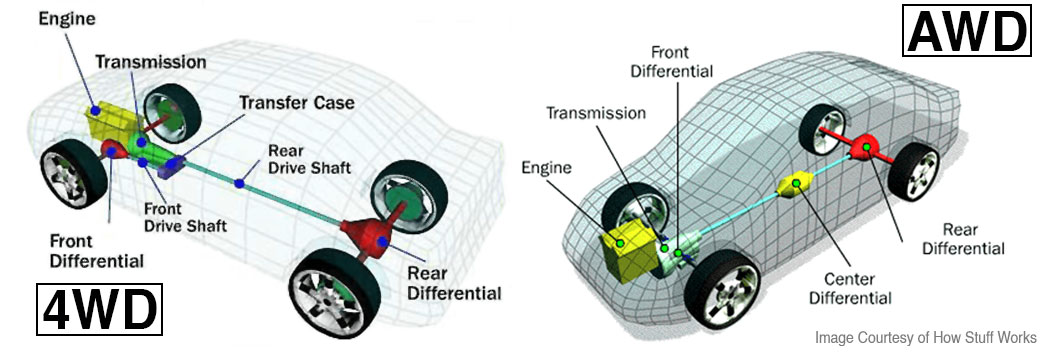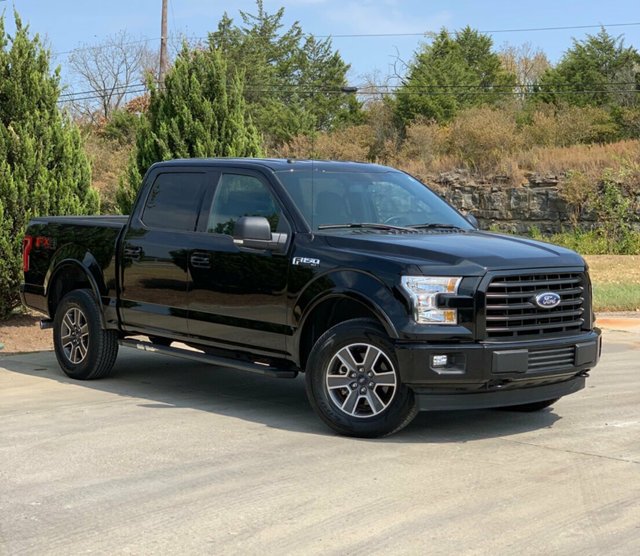
When it comes to the best type of vehicle for traction and off-road performance, some people swear by four-wheel drive (4WD). Others will argue that all-wheel drive (AWD) is superior.
There are advantages and disadvantages to both, depending on what type of driving you do.
4WD vs. AWD
The function of both 4WD and AWD is to provide better traction and handling on surfaces with reduced friction. Loose soil, mud, steep inclines, rain and snow are all reasons why a driver may opt for one of these systems. By activating all wheels of a vehicle rather than just two, the tendency to slide or slip is drastically reduced.
About 45% of vehicles sold in the United States have some sort of enhanced drive system. This percentage varies with geographic and climate region. In areas where off-roading is popular, or intense winters are common, the demand for these systems can top 90% of all sales.

4WD benefits
4WD is when a vehicle powers all four wheels simultaneously and equally. This feature is very useful on poorly maintained or granular surfaces. It is a very rugged system designed  for high torque and rough handling. For this reason, it is very popular on pickup trucks and off-road vehicles such as jeeps.
for high torque and rough handling. For this reason, it is very popular on pickup trucks and off-road vehicles such as jeeps.
Typically, the 4WD system is part-time, meaning that the driver can select when to engage or disengage it. This gives greater flexibility in operation and the ability to reduce fuel consumption.
AWD advantages
AWD powers all the wheels, all of the time, much like 4WD. The difference is that both front wheels and both rear wheels are connected through a transaxle. Essentially, the engine is powering two pairs of wheels rather than four separately.
AWD provides more power and acceleration than a 4WD system. This configuration is by design less rugged than 4WD but very reliable.
 Automatic AWD is more sophisticated than 4WD. The driver does have the option to select various modes based on the conditions they are experiencing. However, they generally have no control over what wheels are being powered.
Automatic AWD is more sophisticated than 4WD. The driver does have the option to select various modes based on the conditions they are experiencing. However, they generally have no control over what wheels are being powered.
Computers and accelerometers sense when a vehicle is losing traction and will select what wheels to power to regain traction. This system is very popular on smaller SUVs, crossovers, and sedans, ranging from basic to luxury models.
System limitations
Both systems enhance safety and performance but are not foolproof. AWD and 4WD can lose traction if the vehicle is traveling too fast or the driver attempts to change direction too rapidly with hazardous road conditions.
The system can only provide as much traction as the contact patch between tire and surface will allow. For this reason, snow and ice still need to be respected and traversed with caution.
Many a driver has come to grief believing that their drive system would allow for highway speeds on twisting back roads covered with snow. Neither 4WD or AWD will help the brakes work better; they are strictly for traction.
The Mike Duman Auto Superstore carries many types of AWD and 4WD vehicles. Please take a look through our inventory and let us help you find the right vehicle.
